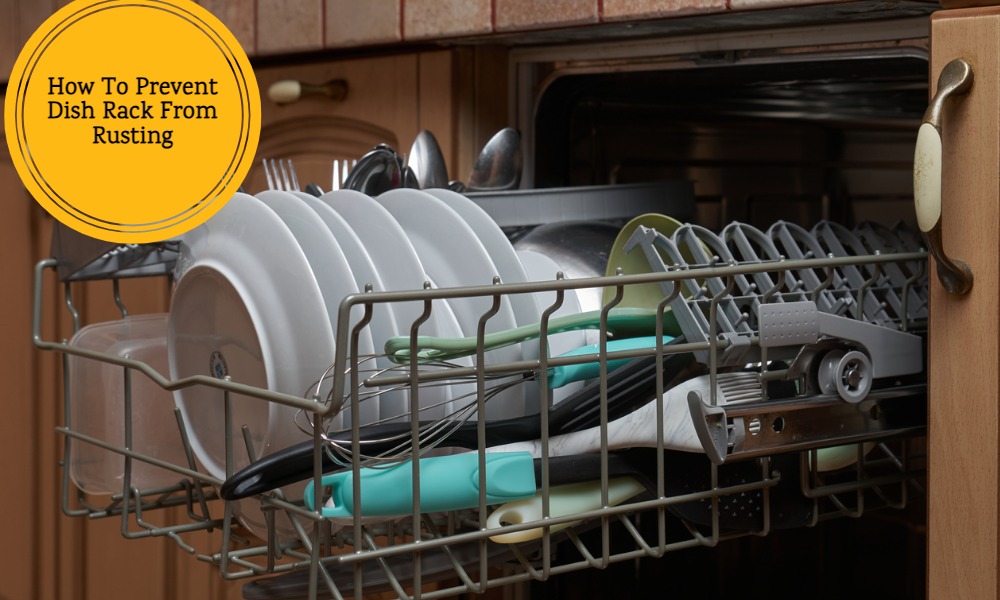Dish racks are an essential tool in any kitchen, providing an efficient system for drying washed dishes. Over time, however, exposure to moisture and air can lead to rusting, particularly in metal dish racks. Rust not only diminishes the aesthetic appeal of your dish rack but may also contaminate your dishes with harmful rust particles. Therefore, understanding how to prevent your dish rack from rusting is crucial for maintaining a clean, safe, And visually pleasing kitchen environment.
Let’s delve into some effective strategies to prevent this common issue, ensuring your dishes rack remains in top-notch condition for years to come.
What Is Rust In Dish Rack?
Rust is a reddish or brownish flaky coating of iron oxide that forms on iron or steel exposed to moisture and air. In a dish rack, especially those made from metal, rust typically occurs when the protective coating or finish wears off, exposing the underlying metal to water and oxygen.
Prolonged exposure to these elements leads to A chemical reaction called oxidation, Which results in the formation Of iron oxides or rust. This is not only unattractive, but it can also lead to contamination of your dishes with rust particles, posing potential health risks and deteriorating the functionality and lifespan of the dish rack.
Benefits Of A Rust-Free Dish Rack

- Health and Safety: Rust-free dishes racks reduce the risk of contaminating your dishes with rust particles. Ingesting rust isn’t typically dangerous, but it can be unpleasant and can cause harm in large quantities over time.
- Longevity of Use: A dish racks that remains free from rust will generally last longer. Rust can eat away at the metal over time, weakening its structure and eventually causing it to break.
- Aesthetic Appeal: Rust-free dish racks maintain their original look, contributing to a cleaner and more appealing kitchen environment. Rust can be unsightly and give the impression of an unclean or uncared-for kitchen.
- Maintenance Ease: It is easier to clean and maintain a dishes rack that isn’t rusted. Rust can be difficult to remove and often requires special cleaning solutions and extra effort.
- Preserving Dishware: Rust particles can stain your dishes, silverware, and glassware. A rust-free rack helps to keep your dishware in pristine condition.
- Cost-Effective: Keeping your dishes rack rust-free helps avoid the additional costs of replacement. This can be particularly important for high-quality or designer dishes racks, which can be expensive to replace.
How Often Should I Clean My Dish Rack?
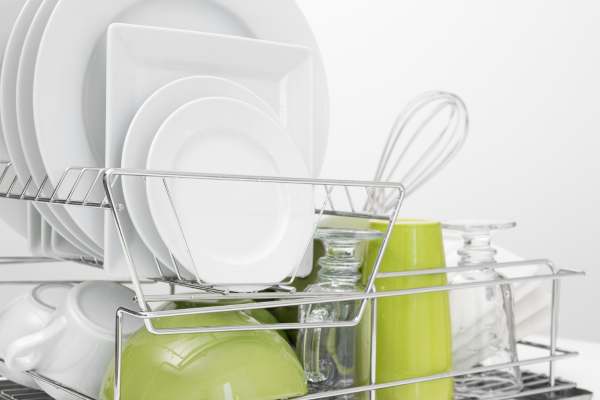
The Frequency Of cleaning your dishes rack can vary depending on its use And the local water quality, but a general rule Of thumb is to clean it once a week. This helps to prevent the buildup of food debris, grime, And mineral deposits from the water, Which can contribute to the development of rust and bacteria.
If you notice visible grime or mold sooner than a week, or if you’ve been washing a large number of dishes, you might want to clean them more frequently. Regular cleaning is essential in maintaining the longevity and cleanliness of your dish rack, ensuring it remains safe and hygienic for drying your dishes.
Understanding The Causes Of Rust
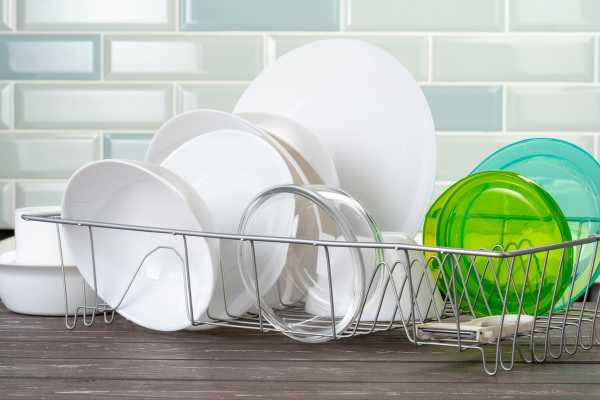
Rust, scientifically known as iron oxide, Is primarily caused by A chemical reaction between iron, water, and oxygen, A process known as oxidation. This reaction is particularly prevalent in metal dishes racks where the protective coating has been compromised or worn away, exposing the raw metal underneath.
This exposure allows water and oxygen to react with the iron in the metal, forming rusty. Environmental factors can accelerate this process, such as high humidity, salt air, or acidic conditions. Furthermore, frequent contact with water and air common in the case of dish racks facilitates this oxidation process, increasing the likelihood of rusty formation. Understanding these causes is key to implementing effective strategies to prevent rust from forming on your dishes rack.
Process Of Prevent Dish Racks From Rusting
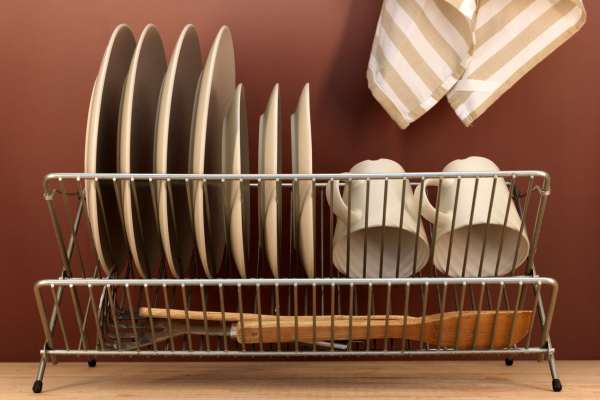
1. Use Soft Cloths
After each use of your dishes rack, it’s beneficial to wipe it down with a soft, dry cloth. This action removes any standing water, reducing the dish rack’s exposure to moisture and consequently lessening the risk of rusting. It’s especially important to focus on joints, corners, and any areas where water might accumulate. Remember, rusty forms when metal remains in contact with water for prolonged periods, so keeping your dishes rack dry is a fundamental step in rusty prevention.
2. Use Baking Soda
Baking soda is a mild abrasive that can remove minor surface rust and prevent its further growth. Mix a generous amount Of baking soda with A bit Of water to create a thick paste. Apply this paste to the dishes rack, focusing on any existing rusty spots or areas prone to rusting. Allow it to sit for A few hours before scrubbing it gently with A toothbrush or soft cloth. Rinse the rack thoroughly afterward to remove any residue. The baking soda works to neutralize the acidity that speeds up rusty formation.
3. Use Vinegar
Vinegar, specifically white vinegar, is an effective natural rust remover due to its acidic properties. For preventive measures, you can dilute the vinegar with water and use this solution to clean your dish racks regularly. For more severe rust, soak the dish racks in undiluted vinegar for a few hours or overnight. The acetic acid in the vinegar will react with the rusty, helping to dissolve it. After the soak, scrub the dishes rack gently to remove the loosened rusty, and then rinse it thoroughly. Remember to dry the rack completely after cleaning to prevent new rust from forming.
4. Use Commercial Cleaners
Commercial rust removers can be a powerful tool in both preventing and treating rusty. Always follow the instructions on the label To ensure safe And effective use. These products usually require an application to the rusted area, a waiting period, and then a rinse. For prevention, some commercial products can be applied to provide a protective layer against rustyformation. However, it’s important to ensure any commercial cleaner used is safe for kitchenware.
5. Use Handling Sharp Objects
One of the main reasons dishes racks start rusting is due to scratches that expose the bare metal underneath the protective coating. Sharp objects, like knives or forks, can easily cause these scratches. Try to be mindful when placing these items on the rack. You could designate a specific area for sharp items or place them in a separate container to prevent damage to the rack.
6. Use Vinyl Coating
Applying a vinyl coating to your dishes rack can serve as an effective barrier against rusty. This coating prevents moisture from reaching the metal, Thereby eliminating the possibility Of rusty. It’s best to apply this coating when the racks is new or thoroughly cleaned, ensuring there’s no pre-existing rusty. Vinyl coatings are usually available as sprays and can be applied at home, following the instructions on the product.
7. Tape Wrapping
For dish racks parts that are especially susceptible to rusty, such as joints or corners, tape wrapping can provide an extra layer of protection. Waterproof tape is best for this purpose. Ensure the surface is dry and clean before applying the tape. This method can also be used to cover small areas where the original protective coating might have worn off or chipped. It’s A simple, cost-effective way to prolong the life Of your dishes rack and prevent rusty from forming.
Regular Cleaning And Maintenance
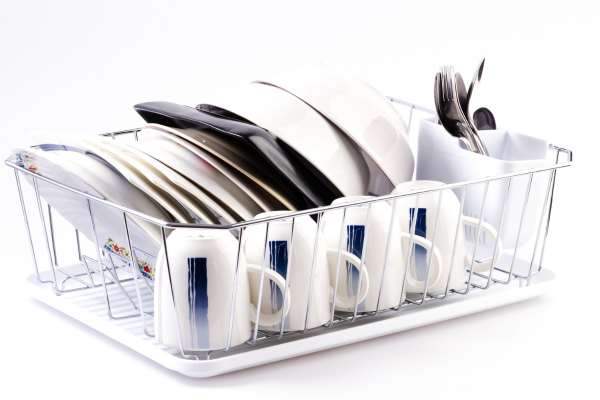
Regular cleaning and maintenance play a critical role in preventing rusty and extending the lifespan of your dishes rack. A weekly cleaning routine, involving washing with mild soap and warm water, can effectively remove food debris, grime, and mineral deposits that could potentially lead to rust. Using baking soda or vinegar can also help eliminate any early signs of rusty.
After each cleaning, it’s important to thoroughly dry the racks to minimize moisture exposure. Additionally, regular checks for any damage or wear, particularly in the joints or corners, can help catch and rectify potential rust-inducing issues early. Careful handling, especially when placing sharp objects on the racks, can prevent scratches that expose the metal underneath to rusting. By prioritizing regular cleaning and maintenance, You can ensure that your dishes rack stays rusty-free, hygienic, And durable for years to come.
Proper Usage And Handling

Proper usage and handling of your dish racks can greatly reduce the risk of rusting and prolong its lifespan. Avoid overloading the rack, as this can cause strain and potentially damage the protective coating. Handle your dishes rack gently to prevent scratches or chips that could expose the underlying metal to moisture and air.
Especially be careful when placing and removing sharp objects like knives and forks, as these can easily scratch the protective coating. After each use, ensure to remove any trapped water in the dishes rack, as standing water can accelerate rust formation. Also, try to place the dish racks in a well-ventilated area to promote faster drying. By using and handling your dish racks properly, you can minimize damage, prevent rusty formation, and maintain its functionality for longer.
Investing In A Dish Rack With Rust-Resistant Features
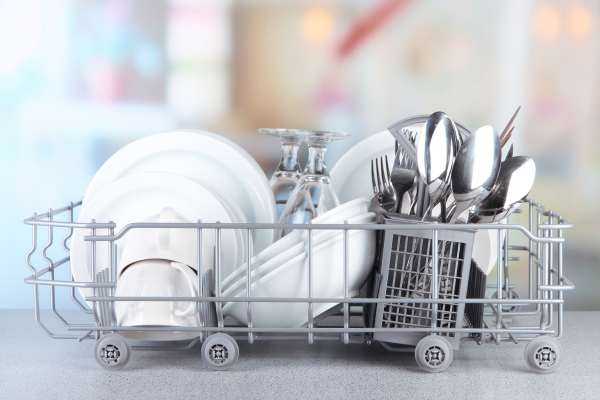
When purchasing a dish racks, it’s a wise investment to choose one with rust-resistant features. Some dish racks are made from materials that are naturally resistant to rust, Such as stainless steel, plastic, Or bamboo. If you prefer a metal dish rack, look for one that has been treated with a rust-resistant coating.
Some high-quality dish racks also have added protection in areas prone to rust, like joints and corners. Although these features might increase the initial cost of the dish rack, they can save you money in the long run by reducing the need for replacements or rust-removal products. Plus, they can help maintain the aesthetics of your kitchen and the safety of your dishes. So, investing in a rust-resistant dish rack can be a valuable strategy for a hassle-free dish drying experience.
What Leads To Rust On A Dish Rack?
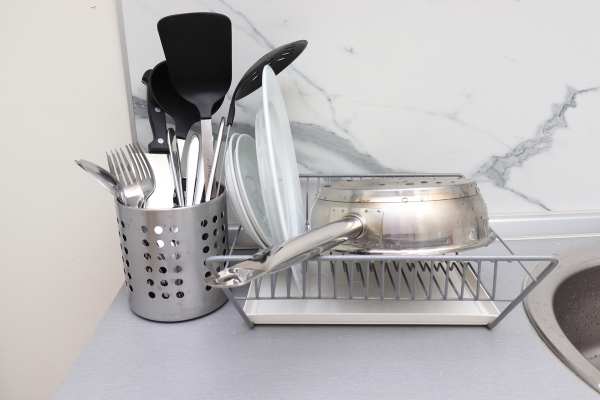
Rust on a dish rack typically occurs due to prolonged exposure to moisture and air. When the protective coating on the dish rack’s metal surface gets compromised, either through scratches or wear and tear, it allows water and oxygen to reach the underlying metal. This triggers A chemical reaction called oxidation, leading to the formation Of rust. Factors such as high humidity, frequent contact with water, and improper maintenance can accelerate the rusting process. Regular cleaning, drying, and applying a protective coating or rust-resistant finish can help prevent rusty from forming on a dish rack.
The Best Dish Racks That Prevent Rusting
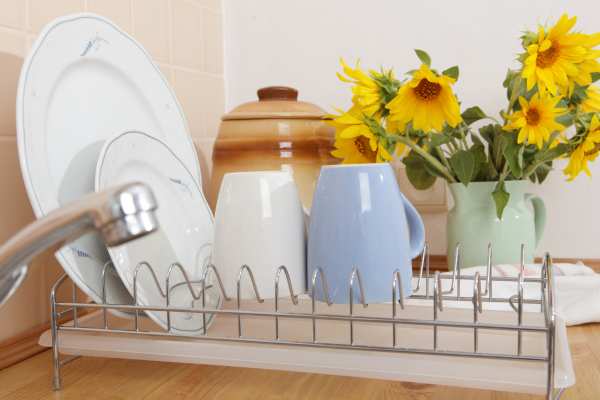
The best dish racks that prevent rusting are typically made from rust-resistant materials such as stainless steel or aluminum. Stainless steel dish racks are highly durable, corrosion-resistant, And can withstand prolonged exposure To moisture without rusting. Look for dish racks with A high-quality, non-corrosive coating Or finish to provide an extra layer Of protection against rust.
Additionally, dish racks with proper drainage systems and removable utensil holders allow water to flow freely and prevent pooling, reducing the chances of rusty formation. Regular cleaning and thorough drying of the dish rack also contribute to its longevity and rust prevention.
The Final Thoughts
Preventing a dish rack from rusting requires a combination of proactive measures and regular maintenance. Firstly, opting for A dish rack made of rust-resistant materials such as stainless steel Or plastic-coated metal can significantly reduce the risk of rust formation. Additionally, it is crucial to keep the dish rack dry and moisture-free after each use.
Wiping it thoroughly with a clean cloth and allowing it to air dry completely can help prevent the accumulation of water and moisture, which can accelerate rusting. Furthermore, avoiding contact between the dish rack and corrosive substances such as harsh detergents or acidic foods can also contribute to its longevity. Finally, periodically inspecting the dish rack for any signs of rust or damage and promptly addressing them with appropriate remedies, such as applying rusty-resistant coatings or using rust removers, can further enhance its durability. By following these preventative measures and maintaining regular care, one can ensure a rust-free dish rack and prolong its lifespan.
